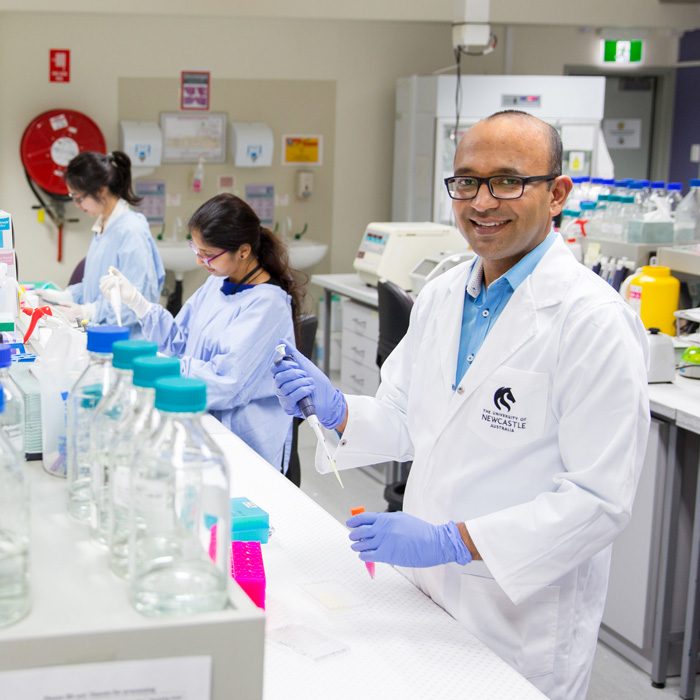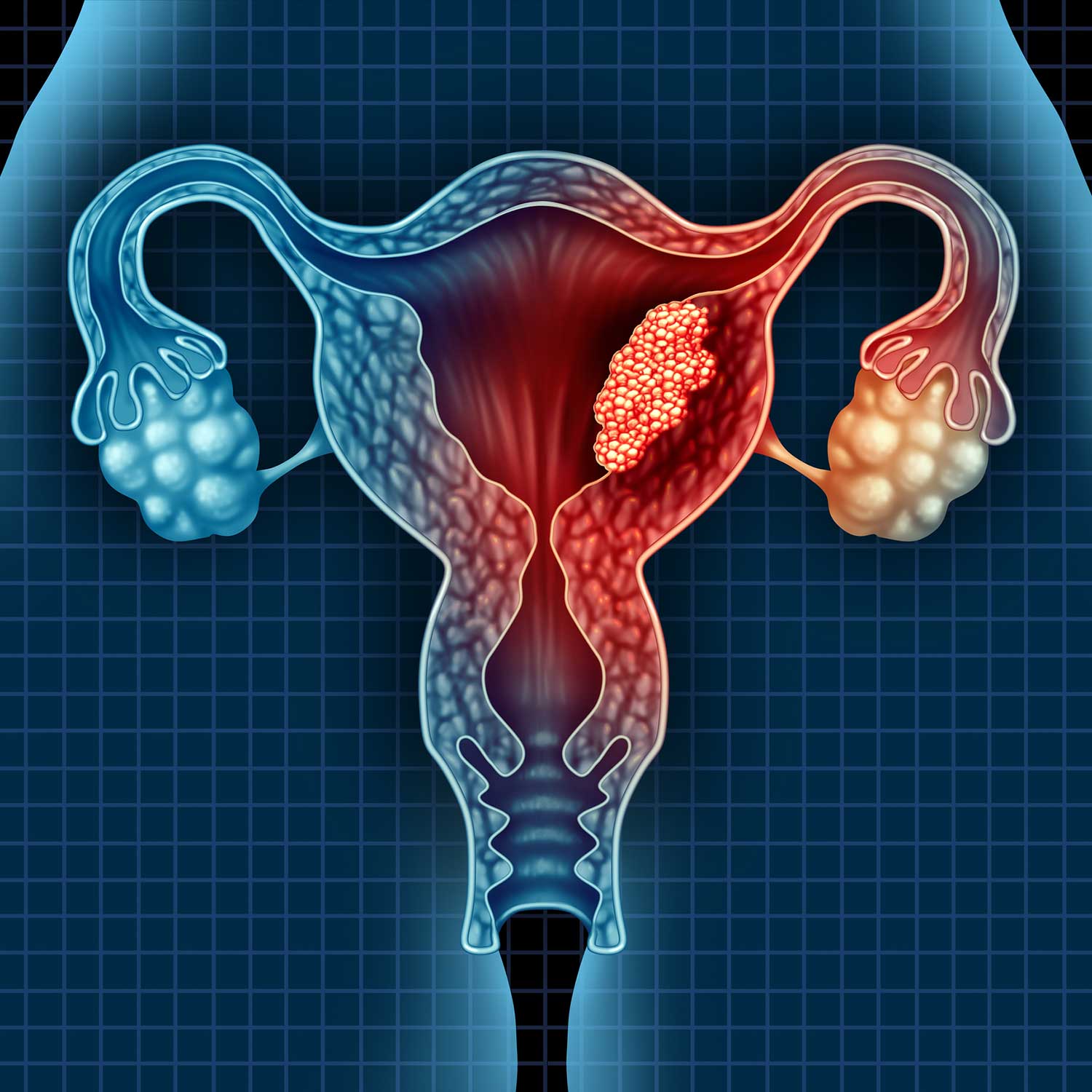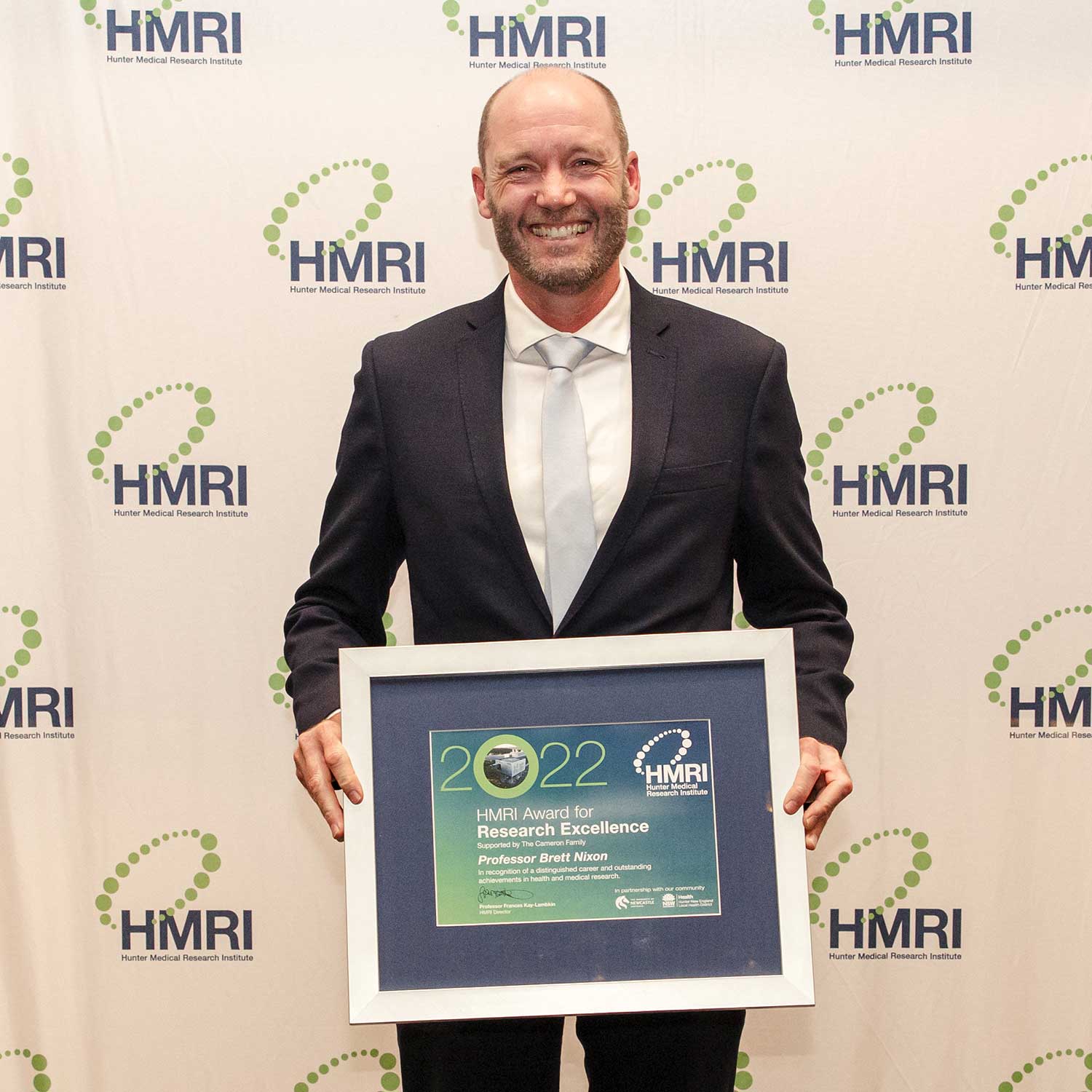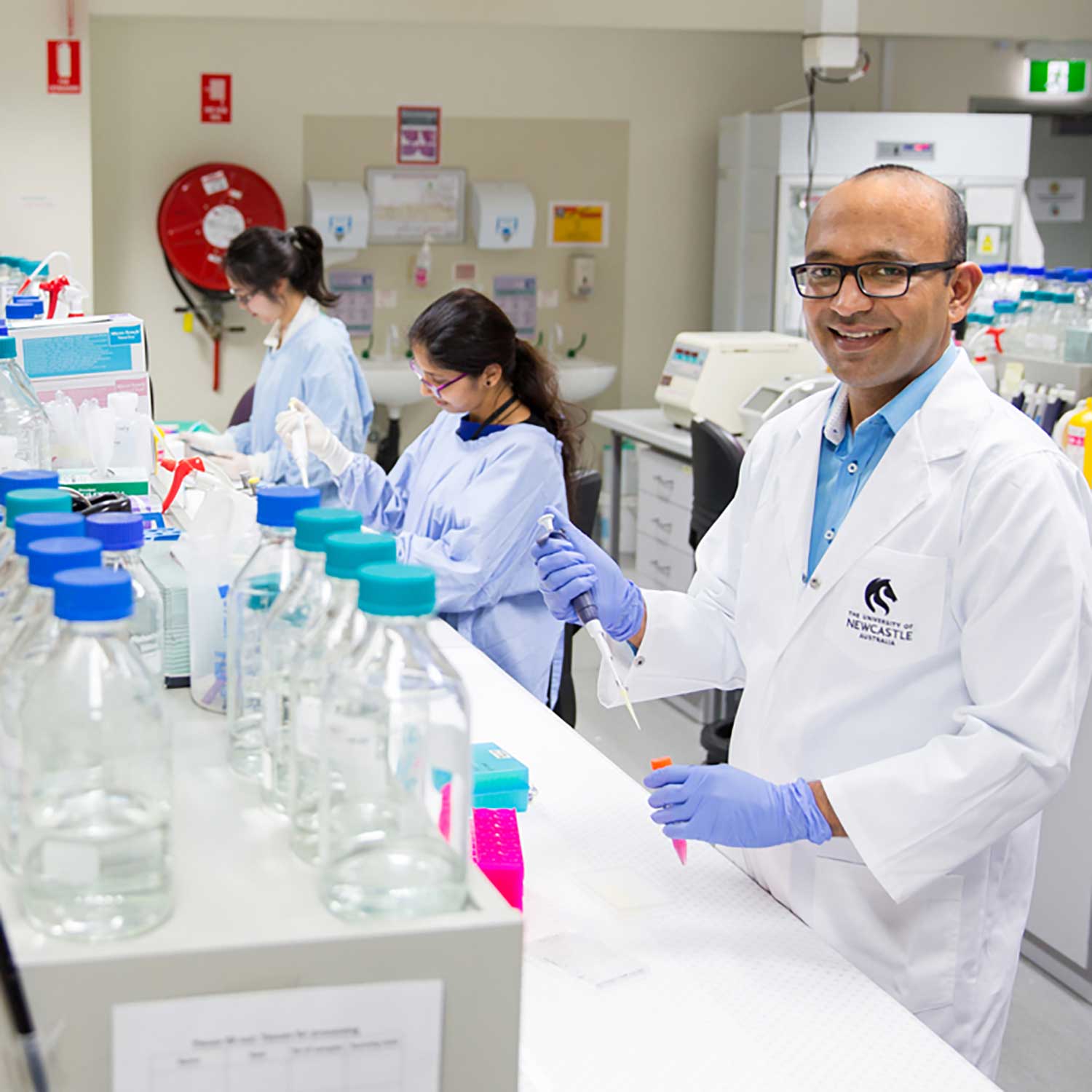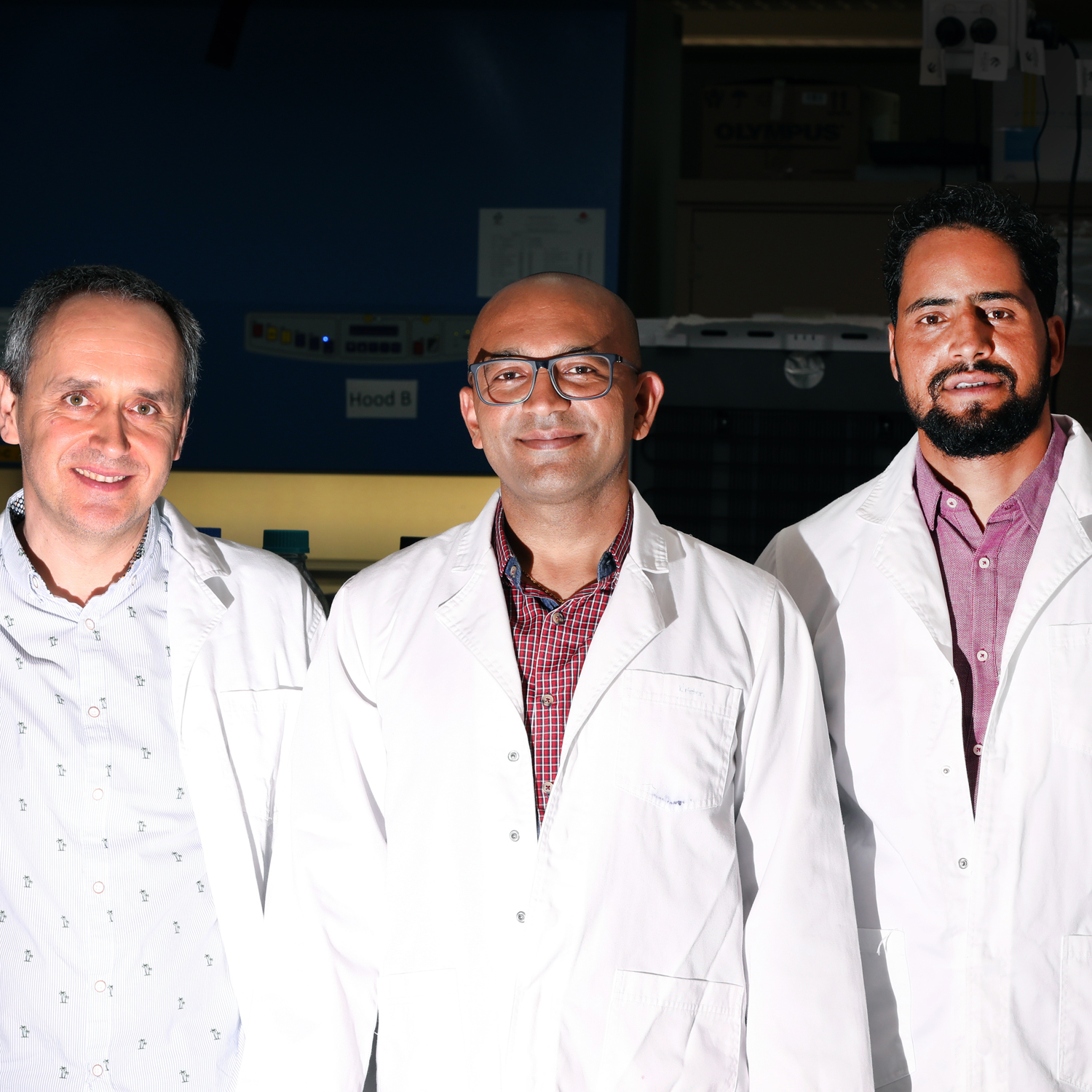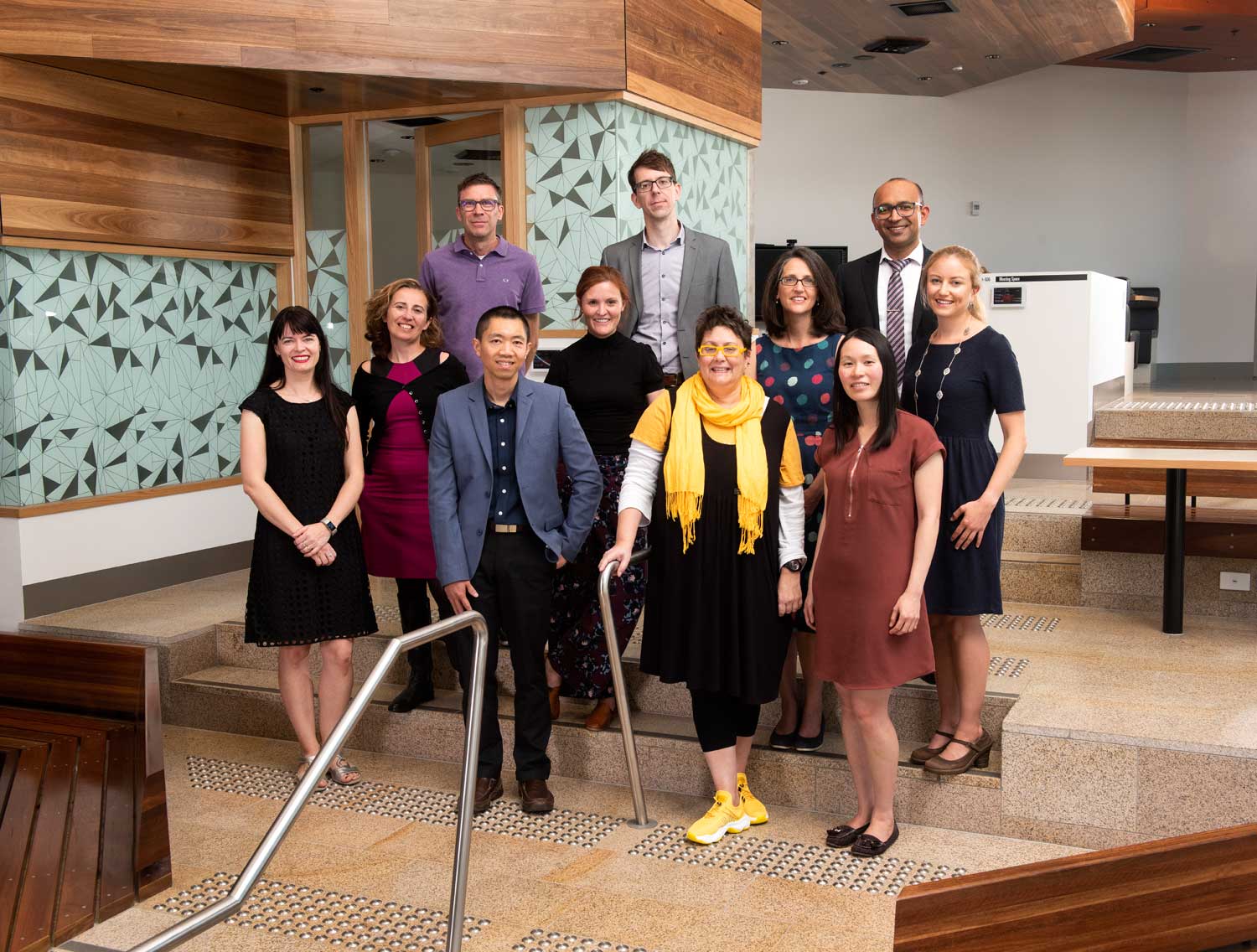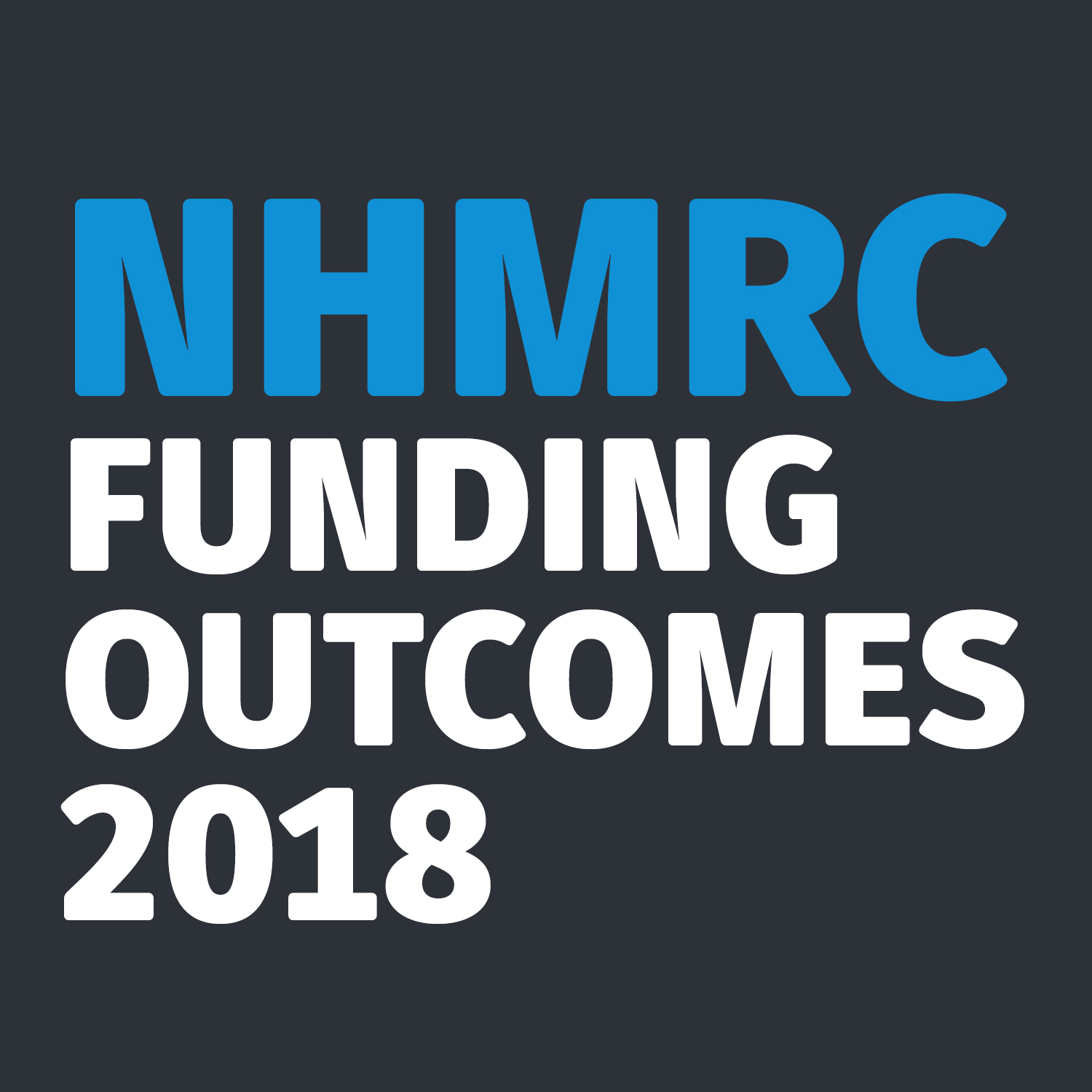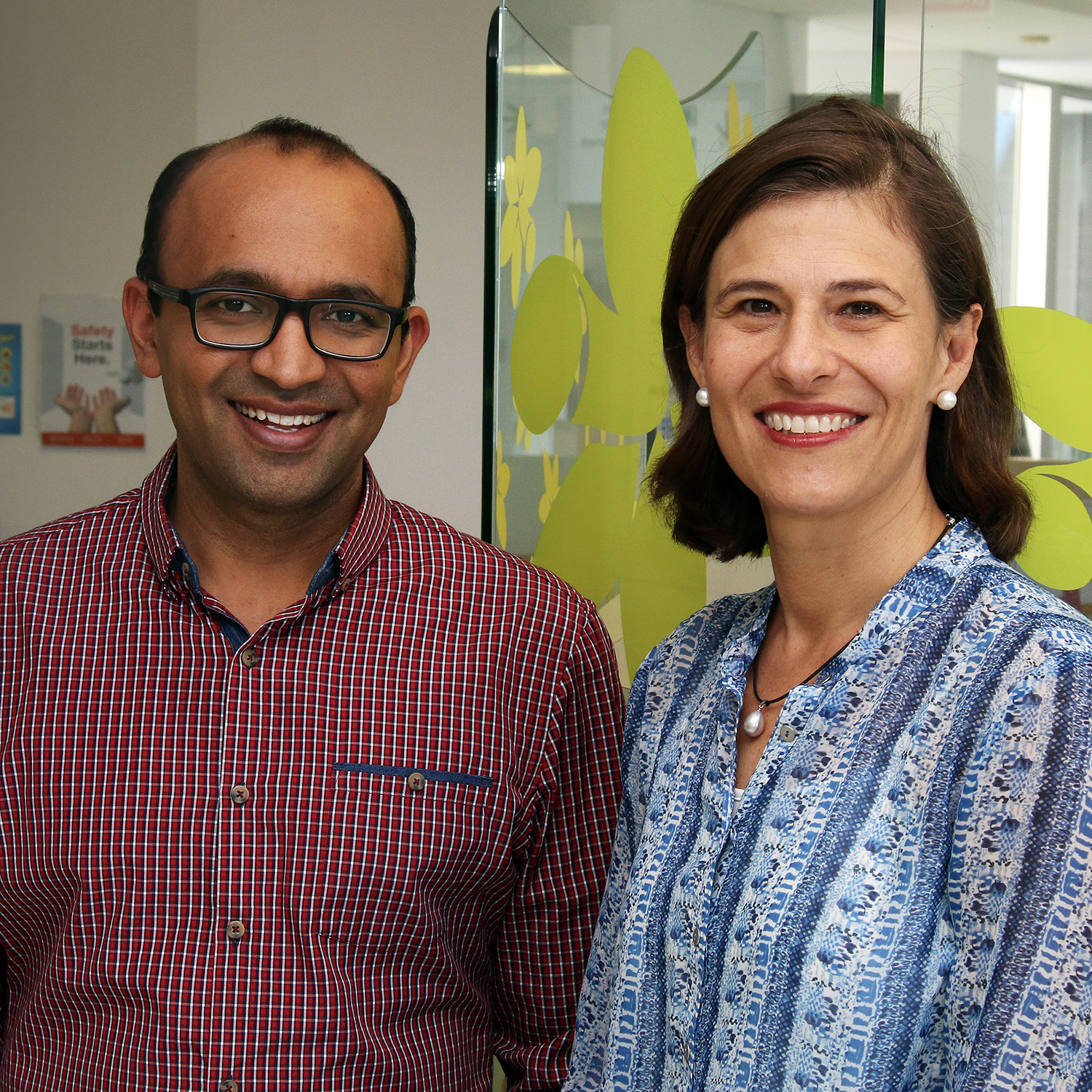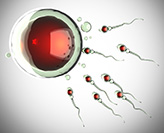
Professor Pradeep Tanwar
Professor
School of Biomedical Sciences and Pharmacy (Medical Biochemistry)
- Email:pradeep.tanwar@newcastle.edu.au
- Phone:(02) 4921 5148
Tackling Silent Killers
By investigating the pathogenesis of female reproductive tract cancers, Professor Pradeep Tanwar aims to develop targeted therapies to improve clinical outcomes.
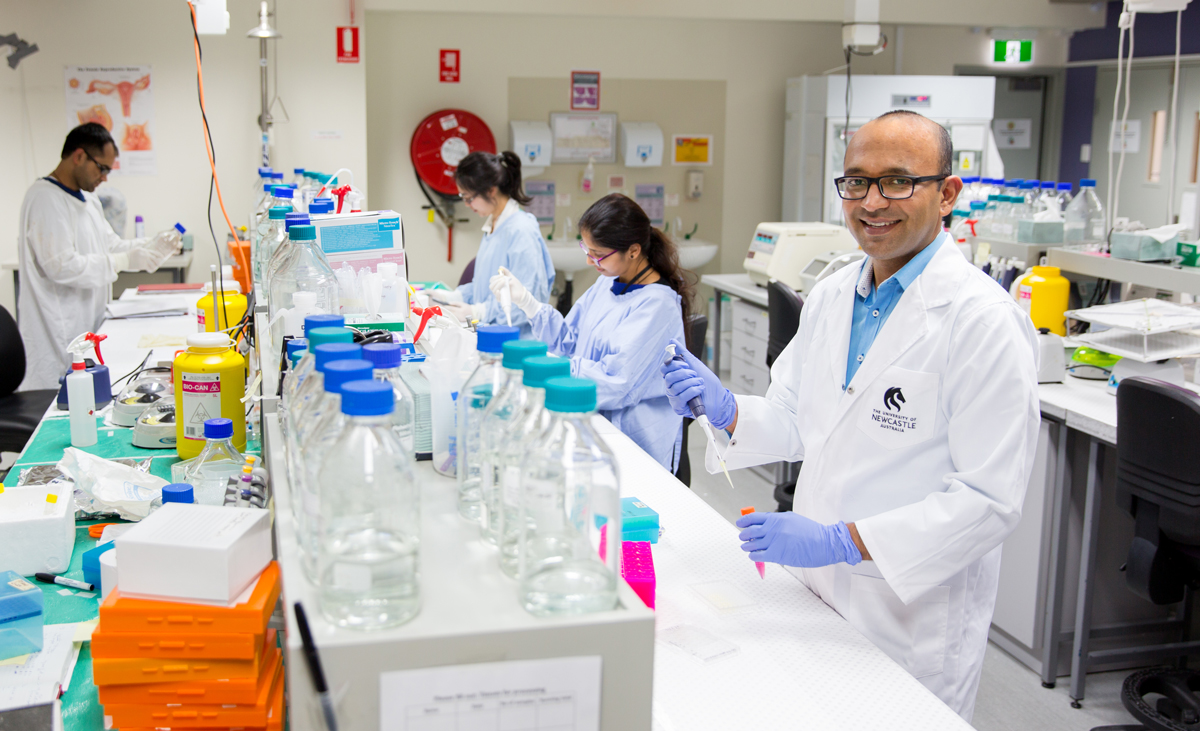
Professor Pradeep Tanwar and his team are methodically investigating questions surrounding female reproductive tract cancers from several different angles.
An investigator of the Hunter Cancer Research Alliance, the potential massive impact of Pradeep’s work has been recognized by his appointment as an NHMRC Career Development (CDF2) Fellow..
“We work on female reproductive tract cancers,” Pradeep explains.
“We mainly focus on two cancers - ovarian cancer, the most deadly of gynecological cancers in women, and endometrial cancer or cancer of the uterus, which is the most common gynecological cancer in females.”
“What we are interested in is how the cancer develops to start with, and once it has developed, how does it progress to a stage where it spreads to other organs,” he says.
“And when it spreads, how can we control it. So we are interested in both how we can control the development or initiation, and how we can control the spread, of these cancers.”
A needle in a haystack
Pradeep explains that genetics, lifestyle factors, and age, are all risk factors for reproductive tract cancers.
“But having a genetic predisposition does not mean these cancers will develop, so lifestyle factors play a role”, Pradeep explains.
“You will find two thousand factors that are different between a patient that has cancer and a patient who does not have cancer, a patient who has metastasis versus a patient who does not have it.”
“So, what are those differences? What combination of factors result in the actual development of the disease? We are looking for a needle in a haystack. But that might be the key.”
Breakdown in cell communication has been identified as a factor in increased incidence of cancers as has been patient’s age, so this communication process is also being studied.
“Cancer is basically excessive production of cell types,” Pradeep says.
“Every day billions of cells are regenerated in the body, and a number of cells need to die to keep everything in perfect harmony. The signals that keep this system in harmony are sometimes disrupted. We hope to discover a way to correct that disruption.”
Working models
With lack of population-wide screening program, symptoms that can mimic other conditions, and diagnostic procedures that are difficult and non-conclusive, cancers of the reproductive tract are notoriously illusive and are most often diagnosed in later stages.
Pradeep’s group use genetically modified animal models, cancer patient-derived xenograft models and primary human tissue samples to define the molecular and cellular events involved in carcinogenesis.
The Hunter Cancer Biobank (HCB) at the Hunter Medical Research Institute (HMRI) collects affected patient tissue, which is then provided to researchers. In this important way, many cancer patients through the Hunter and surrounding areas have contributed to this and other cancer research.
Utilising animal models allows researchers to target early stages of the disease and investigate possible markers that may be identified through existing pathology test processes, ultimately facilitating more timely diagnosis.
Working with these models also allows the team in the lab to bombard tumorous tissue with combinations of off-label medications. Pradeep is hoping to find a medication, already approved and mass produced, or combination of such, that can be repurposed to aid in the fight against these cancers.
Major inroads
Working with a former Harvard colleague, Pradeep has already made a major breakthrough in identifying a protein that can act as a tumour suppressor when treating chemo-resistant ovarian cancer.
He has recently published a paper showing that in animal models and human ovarian cancer cells, progesterone suppresses and oestrogen promotes the growth of cancer cells.
“We were able to find that the initial lesions of ovarian cancers had receptors for oestrogen and progesterone. So if you have too much estrogen, those lesions will develop into cancer.”
As a result of this work, his team including clinicians are exploring the use of hormonal treatments in combination with chemotherapy for reproductive tracts cancers.
“The incidence of cancer in patients is much higher for those who have never used oral contraception than in patients who have used oral contraception,” Pradeep asserts.
“If you take the Pill it suppresses your ovaries and you are less likely to develop ovarian cancer, all reproductive tract cancers.”
“This is vital information for women who may be at high risk due to family history, and women who are postponing pregnancies until later in life.”
The path to here
Pradeep is originally trained in veterinary medicine and animals first ignited his passion for discovering disease prevention strategies.
Frustrated by the amount of animals being put down due to prohibitive treatment costs, Pradeep reasoned that facilitating the maintenance of animal health and worth removed the necessity for large treatment costs, long recovery periods or euthanasia.
“One of the things I also learnt as a veterinarian is that the underlying principle of animal domestication seems to be production. Without reproduction, there is no production. If a cow is not breeding, a farmer is going to get rid of her.”
This principle lead Pradeep to become invested in the study of reproductive systems. A PhD at the University of New England furthered his study of this system in women. A post-doctoral stint at Harvard followed.
“At Harvard, you are embedded in a hospital, so you have oncologists, surgeons, gynecologists, obstetricians, and researchers, all having lunch at the same time,” Pradeep recalls.
“They were discussing their patients and we were discussing our research. I became more and more interested in ovarian and uterine cancers, and learnt a great deal.”
These experiences have resulted in Pradeep establishing a lab environment which comprises of both systemic and specialized approaches in addressing a research problem. Pradeep’s lab also addresses fundamental questions regarding the normal functioning of the female reproductive tract, such as the cellular dynamics. Often answers to these questions helps in understanding what is going wrong with the system leading to disease development.
Overcoming challenges
When reflecting on the many challenges to the diagnosis and treatment of female reproductive cancers, Pradeep cites the increased incidence of obesity amongst women as a major hurdle.
Pradeep and his team have spent four years investigating the role of fat cells in the growth of cancer cells. By providing accessible fuel, fat deposits in the body can accelerate and feed cancers. This process is particularly relevant to ovarian cancer, which metastasizes first to the omentum (a fatty tissue).
“These cancer cells have free food and a free supply of energy,” Pradeep explains.
“But if we can find ways to destruct that communication, then it is possible that cancer cells might be starved to death.”
Another challenge is translating research directly into practice, with Pradeep seeing opportunities for women, and their clinicians, to make informed female reproductive health choices but lacking the information to do so.
“Female reproductive health and fitness is still a taboo topic, although it is a very important part of female biology, and essential to women's health and survival,” Pradeep says.
“So not only do we need to continue searching for answers regarding these cancers, but we need to raise awareness about what we find which translates directly to saving lives.”
Tackling Silent Killers
Dr Pradeep Tanwar and his team are methodically investigating questions surrounding female reproductive tract cancers from several different angles.
Career Summary
Biography
Professor Tanwar is a professor and the Director of Global Centre for Gynaecological Diseases. His team is developing solutions for the leading problems related to women’s health and is internationally renowned for their work in gynaecological diseases. His work investigates what goes wrong with the female reproductive organs in pathologies and how we can fix it. His team has made significant contributions to our understanding of reproductive tract stem cells and their involvement in the pathogenesis of gynaecological diseases (Cell Stem Cell, Cell Reports x2, PNAS x5). Several of his articles have received independent commentaries, cover page editions, and are widely covered by the media, including Technology Network USA, ABC 7.30, SBS News. Research Australia recognised his Cell Stem Cell paper as one of the top 15 innovations nationwide and published it as a two-page story in their INSPIRE magazine. The excellence of his research has been recognised by the award of three consecutive fellowships by NHMRC, ARC, and Cancer Institute NSW, several project grants, six patents, and industry contracts, and an exceptional publication record. He has also trained many undergraduate and postgraduate students in gynaecological diseases. His transdisciplinary team is accumulating compelling scientific rationale to modify, improve and replace current prevention and treatment strategies for gynaecological diseases. Prof Tanwar has received >20 awards (e.g., Australia’s Society of Reproductive Biology Mid-Career Research Excellence Award 2021) and >30 invitations to present plenary/keynote lectures on the international stage, including World Congress in Reproductive Biology 2022 Plenary.
Keywords
- Endometrial cancer
- Fallopian tube
- Gynecologic oncology
- endometriosis
- endometrium
- gynaecological diseases
- ovarian cancer
Languages
- English (Fluent)
Fields of Research
| Code | Description | Percentage |
|---|---|---|
| 321502 | Obstetrics and gynaecology | 50 |
| 321101 | Cancer cell biology | 50 |
Professional Experience
UON Appointment
| Title | Organisation / Department |
|---|---|
| Professor | University of Newcastle School of Biomedical Sciences and Pharmacy Australia |
Academic appointment
| Dates | Title | Organisation / Department |
|---|---|---|
| 1/8/2012 - 13/12/2014 | Lecturer | University of Newcastle School of Biomedical Sciences and Pharmacy Australia |
Publications
For publications that are currently unpublished or in-press, details are shown in italics.
Highlighted Publications
| Year | Citation | Altmetrics | Link | ||||||||
|---|---|---|---|---|---|---|---|---|---|---|---|
| 2017 |
Ghosh A, Syed SM, Tanwar PS, 'In vivo genetic cell lineage tracing reveals that oviductal secretory cells self-renew and give rise to ciliated cells', Development (Cambridge), 144 3031-3041 (2017) [C1] The epithelial lining of the fallopian tube is vital for fertility, providing nutrition to gametes and facilitating their transport. It is composed of two major cell types: secret... [more] The epithelial lining of the fallopian tube is vital for fertility, providing nutrition to gametes and facilitating their transport. It is composed of two major cell types: secretory cells and ciliated cells. Interestingly, human ovarian cancer precursor lesions primarily consist of secretory cells. It is unclear why secretory cells are the dominant cell type in these lesions. Additionally, the underlying mechanisms governing fallopian tube epithelial homoeostasis are unknown. In the present study, we showed that across the different developmental stages of mouse oviduct, secretory cells are the most frequently dividing cells of the oviductal epithelium. In vivo genetic cell lineage tracing showed that secretory cells not only self-renew, but also give rise to ciliated cells. Analysis of a Wnt reporter mouse model and various Wnt target genes showed that the Wnt signaling pathway is involved in oviductal epithelial homoeostasis. By developing two triple-transgenic mouse models, we showed that Wnt/ ß-catenin signaling is essential for self-renewal as well as the differentiation of secretory cells. In summary, our results provide mechanistic insight into oviductal epithelial homoeostasis.
|
Nova | |||||||||
| 2020 |
Ali A, Syed SM, Jamaluddin MFB, Colino-Sanguino Y, Gallego-Ortega D, Tanwar PS, 'Cell Lineage Tracing Identifies Hormone-Regulated and Wnt-Responsive Vaginal Epithelial Stem Cells', Cell Reports, 30 1463-1477.e7 (2020) [C1] The intact vaginal epithelium is essential for women's reproductive health and provides protection against HIV and sexually transmitted infections. How this epithelium mainta... [more] The intact vaginal epithelium is essential for women's reproductive health and provides protection against HIV and sexually transmitted infections. How this epithelium maintains itself remains poorly understood. Here, we used single-cell RNA sequencing (RNA-seq) to define the diverse cell populations in the vaginal epithelium. We show that vaginal epithelial cell proliferation is limited to the basal compartment without any obvious label-retaining cells. Furthermore, we developed vaginal organoids and show that the basal cells have increased organoid forming efficiency. Importantly, Axin2 marks a self-renewing subpopulation of basal cells that gives rise to differentiated cells over time. These cells are ovariectomy-resistant stem cells as they proliferate even in the absence of hormones. Upon hormone supplementation, these cells expand and reconstitute the entire vaginal epithelium. Wnt/ß-catenin is essential for the proliferation and differentiation of vaginal stem cells. Together, these data define heterogeneity in vaginal epithelium and identify vaginal epithelial stem cells.
|
Nova | |||||||||
| 2020 |
Syed SM, Kumar M, Ghosh A, Tomasetig F, Ali A, Whan RM, et al., 'Endometrial Axin2 Cells Drive Epithelial Homeostasis, Regeneration, and Cancer following Oncogenic Transformation', Cell Stem Cell, 26 64-80.e13 (2020) [C1]
|
Nova | |||||||||
| 2020 |
Ghosh A, Syed SM, Kumar M, Carpenter TJ, Teixeira JM, Houairia N, et al., '
|
Nova | |||||||||
| 2022 |
Venkata VD, Jamaluddin MFB, Goad J, Drury HR, Tadros MA, Lim R, et al., 'Development and characterization of human fetal female reproductive tract organoids to understand Müllerian duct anomalies', Proceedings of the National Academy of Sciences of the United States of America, 119 (2022) [C1] Müllerian ducts are paired tubular structures that give rise to most of the female repro- ductive organs. Any abnormalities in the development and differentiation of these ducts l... [more] Müllerian ducts are paired tubular structures that give rise to most of the female repro- ductive organs. Any abnormalities in the development and differentiation of these ducts lead to anatomical defects in the female reproductive tract organs categorized as Müllerian duct anomalies. Due to the limited access to fetal tissues, little is understood of human reproductive tract development and the associated anomalies. Although organoids represent a powerful model to decipher human development and disease, such organoids from fetal reproductive organs are not available. Here, we developed organoids from human fetal fallopian tubes and uteri and compared them with their adult counterparts. Our results demonstrate that human fetal reproductive tract epithelia do not express some of the typical markers of adult reproductive tract epithelia. Furthermore, fetal organoids are grossly, histologically, and proteomically different from adult organoids. While external supplementation of WNT ligands or activators in culture medium is an absolute requirement for the adult reproductive tract organoids, fetal organoids are able to grow in WNT-deficient conditions. We also developed decellularized tissue scaffolds from adult human fallopian tubes and uteri. Transplantation of fetal organoids onto these scaffolds led to the regeneration of the adult fallopian tube and uterine epithelia. Importantly, suppression of Wnt signaling, which is altered in patients with Müllerian duct anomalies, inhibits the regenerative ability of human fetal organoids and causes severe anatomical defects in the mouse reproductive tract. Thus, our fetal organoids represent an important platform to study the underlying basis of human female reproductive tract development and diseases.
|
Nova | |||||||||
| 2022 |
Jamaluddin MFB, Ghosh A, Ingle A, Mohammed R, Ali A, Bahrami M, et al., 'Bovine and human endometrium-derived hydrogels support organoid culture from healthy and cancerous tissues', Proceedings of the National Academy of Sciences, 119 (2022) [C1]
|
Nova | |||||||||
| 2022 |
Jamaluddin MFB, Ko Y-A, Ghosh A, Syed SM, Ius Y, O'Sullivan R, et al., 'Proteomic and functional characterization of intra-tumor heterogeneity in human endometrial cancer', CELL REPORTS MEDICINE, 3 (2022) [C1]
|
Nova | |||||||||
| 2023 |
Brown Y, Hua S, Tanwar PS, 'Extracellular matrix in high-grade serous ovarian cancer: Advances in understanding of carcinogenesis and cancer biology.', Matrix Biol, 118 16-46 (2023) [C1]
|
Nova | |||||||||
Journal article (59 outputs)
| Year | Citation | Altmetrics | Link | ||||||||
|---|---|---|---|---|---|---|---|---|---|---|---|
| 2024 |
Mayall JR, Horvat JC, Mangan NE, Chevalier A, McCarthy H, Hampsey D, et al., 'Interferon-epsilon is a novel regulator of NK cell responses in the uterus', EMBO Molecular Medicine, 16 267-293 [C1]
|
||||||||||
| 2023 |
Jamaluddin MFB, Nagendra PB, Ko Y-A, Bajwa P, Scott RJ, Nahar P, Tanwar PS, 'Prevalence and clinical significance of co-existing mutations in MED12 and FH in uterine fibroids of Australian women', Frontiers in Reproductive Health, 5 [C1]
|
Nova | |||||||||
| 2023 |
Brown Y, Hua S, Tanwar PS, 'Extracellular matrix in high-grade serous ovarian cancer: Advances in understanding of carcinogenesis and cancer biology.', Matrix Biol, 118 16-46 (2023) [C1]
|
Nova | |||||||||
| 2023 |
Lawson EF, Ghosh A, Blanch V, Grupen CG, Aitken RJ, Lim R, et al., 'Establishment and characterization of oviductal organoids from farm and companion animals .', Biol Reprod, 108 854-865 (2023) [C1]
|
Nova | |||||||||
| 2023 |
Jamaluddin MFB, Day T, Tanwar PS, Marzol A, Scurry J, 'Mass Spectrometry Proteomic Analysis of Four p53 Patterns in Differentiated Vulvar Intraepithelial Neoplasia.', J Low Genit Tract Dis, 27 146-151 (2023) [C1]
|
Nova | |||||||||
| 2023 |
Kumar M, Sahoo SS, Jamaluddin MFB, Tanwar PS, 'Loss of liver kinase B1 in human seminoma', Frontiers in Oncology, 13 (2023) [C1] Testicular cancer is a common malignancy of young males and is believed to be originated from defective embryonic or adult germ cells. Liver kinase B1 (LKB1) is a serine/threonine... [more] Testicular cancer is a common malignancy of young males and is believed to be originated from defective embryonic or adult germ cells. Liver kinase B1 (LKB1) is a serine/threonine kinase and a tumor suppressor gene. LKB1 is a negative regulator of the mammalian target of rapamycin (mTOR) pathway, often inactivated in many human cancer types. In this study, we investigated the involvement of LKB1 in the pathogenesis of testicular germ cell cancer. We performed immunodetection of LKB1 protein in human seminoma samples. A 3D culture model of human seminoma was developed from TCam-2 cells, and two mTOR inhibitors were tested for their efficacy against these cancer cells. Western blot and mTOR protein arrays were used to show that these inhibitors specifically target the mTOR pathway. Examination of LKB1 showed reduced expression in germ cell neoplasia in situ lesions and seminoma compared to adjacent normal-appearing seminiferous tubules where the expression of this protein was present in the majority of germ cell types. We developed a 3D culture model of seminoma using TCam-2 cells, which also showed reduced levels of LKB1 protein. Treatment of TCam-2 cells in 3D with two well-known mTOR inhibitors resulted in reduced proliferation and survival of TCam-2 cells. Overall, our results support that downregulation or loss of LKB1 marks the early stages of the pathogenesis of seminoma, and the suppression of downstream signaling to LKB1 might be an effective therapeutic strategy against this cancer type.
|
Nova | |||||||||
| 2022 |
Venkata VD, Jamaluddin MFB, Goad J, Drury HR, Tadros MA, Lim R, et al., 'Development and characterization of human fetal female reproductive tract organoids to understand Müllerian duct anomalies', Proceedings of the National Academy of Sciences of the United States of America, 119 (2022) [C1] Müllerian ducts are paired tubular structures that give rise to most of the female repro- ductive organs. Any abnormalities in the development and differentiation of these ducts l... [more] Müllerian ducts are paired tubular structures that give rise to most of the female repro- ductive organs. Any abnormalities in the development and differentiation of these ducts lead to anatomical defects in the female reproductive tract organs categorized as Müllerian duct anomalies. Due to the limited access to fetal tissues, little is understood of human reproductive tract development and the associated anomalies. Although organoids represent a powerful model to decipher human development and disease, such organoids from fetal reproductive organs are not available. Here, we developed organoids from human fetal fallopian tubes and uteri and compared them with their adult counterparts. Our results demonstrate that human fetal reproductive tract epithelia do not express some of the typical markers of adult reproductive tract epithelia. Furthermore, fetal organoids are grossly, histologically, and proteomically different from adult organoids. While external supplementation of WNT ligands or activators in culture medium is an absolute requirement for the adult reproductive tract organoids, fetal organoids are able to grow in WNT-deficient conditions. We also developed decellularized tissue scaffolds from adult human fallopian tubes and uteri. Transplantation of fetal organoids onto these scaffolds led to the regeneration of the adult fallopian tube and uterine epithelia. Importantly, suppression of Wnt signaling, which is altered in patients with Müllerian duct anomalies, inhibits the regenerative ability of human fetal organoids and causes severe anatomical defects in the mouse reproductive tract. Thus, our fetal organoids represent an important platform to study the underlying basis of human female reproductive tract development and diseases.
|
Nova | |||||||||
| 2022 |
Jamaluddin MFB, Ghosh A, Ingle A, Mohammed R, Ali A, Bahrami M, et al., 'Bovine and human endometrium-derived hydrogels support organoid culture from healthy and cancerous tissues', Proceedings of the National Academy of Sciences, 119 (2022) [C1]
|
Nova | |||||||||
| 2022 |
Radhakrishnan D, Mohanan S, Choi G, Choy J-H, Tiburcius S, Trinh HT, et al., 'The emergence of nanoporous materials in lung cancer therapy', SCIENCE AND TECHNOLOGY OF ADVANCED MATERIALS, 23 225-274 (2022) [C1]
|
Nova | |||||||||
| 2022 |
Jamaluddin MFB, Ko Y-A, Ghosh A, Syed SM, Ius Y, O'Sullivan R, et al., 'Proteomic and functional characterization of intra-tumor heterogeneity in human endometrial cancer', CELL REPORTS MEDICINE, 3 (2022) [C1]
|
Nova | |||||||||
| 2020 |
Ali A, Syed SM, Jamaluddin MFB, Colino-Sanguino Y, Gallego-Ortega D, Tanwar PS, 'Cell Lineage Tracing Identifies Hormone-Regulated and Wnt-Responsive Vaginal Epithelial Stem Cells', Cell Reports, 30 1463-1477.e7 (2020) [C1] The intact vaginal epithelium is essential for women's reproductive health and provides protection against HIV and sexually transmitted infections. How this epithelium mainta... [more] The intact vaginal epithelium is essential for women's reproductive health and provides protection against HIV and sexually transmitted infections. How this epithelium maintains itself remains poorly understood. Here, we used single-cell RNA sequencing (RNA-seq) to define the diverse cell populations in the vaginal epithelium. We show that vaginal epithelial cell proliferation is limited to the basal compartment without any obvious label-retaining cells. Furthermore, we developed vaginal organoids and show that the basal cells have increased organoid forming efficiency. Importantly, Axin2 marks a self-renewing subpopulation of basal cells that gives rise to differentiated cells over time. These cells are ovariectomy-resistant stem cells as they proliferate even in the absence of hormones. Upon hormone supplementation, these cells expand and reconstitute the entire vaginal epithelium. Wnt/ß-catenin is essential for the proliferation and differentiation of vaginal stem cells. Together, these data define heterogeneity in vaginal epithelium and identify vaginal epithelial stem cells.
|
Nova | |||||||||
| 2020 |
Ferdoushi A, Li X, Griffin N, Faulkner S, Jamaluddin MFB, Gao F, et al., 'Schwann Cell Stimulation of Pancreatic Cancer Cells: A Proteomic Analysis', Frontiers in Oncology, 10 (2020) [C1]
|
Nova | |||||||||
| 2020 |
Syed SM, Tanwar PS, 'Axin2
|
Nova | |||||||||
| 2020 |
Syed SM, Kumar M, Ghosh A, Tomasetig F, Ali A, Whan RM, et al., 'Endometrial Axin2 Cells Drive Epithelial Homeostasis, Regeneration, and Cancer following Oncogenic Transformation', Cell Stem Cell, 26 64-80.e13 (2020) [C1]
|
Nova | |||||||||
| 2020 |
Ghosh A, Syed SM, Kumar M, Carpenter TJ, Teixeira JM, Houairia N, et al., '
|
Nova | |||||||||
| 2019 |
Al-Juboori AAA, Ghosh A, Bin Jamaluddin MF, Kumar M, Sahoo SS, Syed SM, et al., 'Proteomic Analysis of Stromal and Epithelial Cell Communications in Human Endometrial Cancer Using a Unique 3D Co-Culture Model', PROTEOMICS, 19 (2019) [C1]
|
Nova | |||||||||
| 2019 |
Brown Y, Hua S, Tanwar PS, 'Extracellular matrix-mediated regulation of cancer stem cells and chemoresistance', International Journal of Biochemistry and Cell Biology, 109 90-104 (2019) [C1] The identity of cancer stem cells (CSCs) remains an enigma, with the question outstanding of whether CSCs are fixed entities or plastic cell states in response to microenvironment... [more] The identity of cancer stem cells (CSCs) remains an enigma, with the question outstanding of whether CSCs are fixed entities or plastic cell states in response to microenvironmental cues. Recent evidence highlights the power of the tumor microenvironment to dictate CSC functionality and spatiotemporal regulation that gives rise to tumor heterogeneity. This microenvironmental regulation of CSCs parallels that of normal tissues, whereby resident stem cells reside within specialized microenvironments or ¿niches¿, which provide the cellular and molecular signals that wire every aspect of stem cell behavior and fate. The extracellular matrix (ECM), along with its sequestered growth factors, is a fundamental component of the stem cell niche. Pathological ECM remodeling is an established hallmark of cancer, with the ECM a key mediator of metastasis and drug resistance. In this review, we discuss the controversial identity of CSCs and new understanding of the impact of tumor microenvironment on CSC function and phenotype. We outline parallels between development, wound repair and cancer to discuss how changes in ECM dynamics influence stem cell function during normal physiological processes and pathological states, as well as the transition between the two in the form of precancerous lesions. We then explore examples illustrating the molecular circuits partnering cancer cells with stromal cells and how this communication involving ECM imparts a CSC phenotype and promotes chemoresistance. Understanding the mechanisms underlying CSC functionality and chemoresistance, along with mathematical modeling approaches and advancing technologies for targeting the undruggable proteome, should open opportunities for cancer breakthroughs in the future.
|
Nova | |||||||||
| 2019 |
Jamaluddin MFB, Nagendra PB, Nahar P, Oldmeadow C, Tanwar PS, 'Proteomic Analysis Identifies Tenascin-C Expression Is Upregulated in Uterine Fibroids', REPRODUCTIVE SCIENCES, 26 476-486 (2019) [C1]
|
Nova | |||||||||
| 2018 |
Goad J, Ko Y-A, Kumar M, Jamaluddin MFB, Tanwar PS, 'Oestrogen fuels the growth of endometrial hyperplastic lesions initiated by overactive Wnt/ß-catenin signalling.', Carcinogenesis, 39 1105-1116 (2018) [C1]
|
Nova | |||||||||
| 2018 |
Sahoo SS, Lombard JM, Ius Y, O'Sullivan R, Wood LG, Nahar P, et al., 'Adipose-Derived VEGF mTOR Signaling Promotes Endometrial Hyperplasia and Cancer: Implications for Obese Women', Molecular Cancer Research, 16 309-321 (2018) [C1] Obesity is responsible for increased morbidity and mortality in endometrial cancer. Despite the positive correlation of body mass index (BMI) or obesity in endometrial carcinogene... [more] Obesity is responsible for increased morbidity and mortality in endometrial cancer. Despite the positive correlation of body mass index (BMI) or obesity in endometrial carcinogenesis, the contribution of adipose tissue to the pathogenesis of endometrial hyperplasia and cancer is unclear. This study clarifies the role of adipocytes in the pathogenesis of endometrial cancer by demonstrating that adipocyte-conditioned medium (ACM) increases proliferation, migration, and survival of endometrial cancer cells compared with preadipocyte-conditioned medium (PACM). Comparative cytokine array analysis of ACM and PACM reveal upregulation of a group of cytokines belonging to the VEGF signaling pathway in ACM. VEGF protein expression is upregulated in visceral adipose tissue (VAT) in obese patients, which is correlated with increased tumor growth in an in vivo xenograft model. The increased tumor size is mechanistically associated with the activation of the PI3K/AKT/mTOR pathway, a downstream target of VEGF signaling, and its suppression decreased the growth-promoting effects of VAT on endometrial cancer cells. Similar to the human model systems, pathologic changes in endometrial cells in a hyperphagic obese mouse model are associated with increased body weight and hyperactive mTOR signaling. Analysis of human tissue specimens depicts increased in tumor vasculature and VEGF-mTOR activity in obese endometrial cancer patients compared with nonobese patients. Collectively, these results provide evidence that VEGF-mTOR signaling drives endometrial cell growth leading to hyperplasia and cancer. Implications: Adipocyte-derived VEGF¿mTOR signaling may be an attractive therapeutic target against endometrial cancer in obese women.
|
Nova | |||||||||
| 2018 |
Ko YA, Jamaluddin MFB, Adebayo M, Bajwa P, Scott RJ, Dharmarajan AM, et al., 'Extracellular matrix (ECM) activates ß-catenin signaling in uterine fibroids', Reproduction, 155 61-71 (2018) [C1] Recent studies showed that genetic aberrations in the MED12 gene, probably through the canonical WNT/ß-catenin pathway, lead to the pathogenesis of uterine fibroids. However, a co... [more] Recent studies showed that genetic aberrations in the MED12 gene, probably through the canonical WNT/ß-catenin pathway, lead to the pathogenesis of uterine fibroids. However, a comprehensive analysis of the WNT pathway in MED12-mutated and MED12-wildtype fibroids has not been performed. The objective of this study was to determine the status of the WNT pathway in human fibroids. We performed Sanger sequencing to define the MED12 mutational status of fibroids and normal myometrium samples. qPCR arrays were carried out to determine the status of the WNT signaling pathway in MED12-mutated and MED12-wild-type fibroids. Liquid chromatography-mass spectrometry (LC-MS), Western blotting and immunohistochemistry were used to monitor the expression of ß-catenin. We showed that ß-catenin expression was increased in fibroids compared to the adjacent myometrium samples. However, ß-catenin expression showed no correlation with MED12 mutation status. Of all the WNT signaling components, WNT inhibitors showed the greatest differences in expression between fibroids and controls. WIF1, a WNT inhibitor, was identified as the most significantly upregulated gene in fibroids. We cultured primary fibroid cells on hydrogels of known stiffness to decipher the influence of biomechanical cues on ß-catenin expression and revealed increased levels of ß-catenin when cells were cultured on a stiffer surface. In conclusion, our data showed that ß-catenin expression in fibroids occurs independently of MED12 mutations. Biomechanical changes upregulate ß-catenin expression in fibroids, providing an attractive avenue for developing new treatments for this disease.
|
Nova | |||||||||
| 2018 |
Jamaluddin MFB, Nahar P, Tanwar PS, 'Proteomic characterization of the extracellular matrix of human uterine fibroids', Endocrinology, 159 2656-2669 (2018) [C1] Uterine leiomyomas (fibroids) are the most common benign tumors that are associated with increased production of extracellular matrix (ECM). Excessive ECM deposition plays a major... [more] Uterine leiomyomas (fibroids) are the most common benign tumors that are associated with increased production of extracellular matrix (ECM). Excessive ECM deposition plays a major role in the enlargement and stiffness of these tumors and contributes to clinical symptoms, such as abnormal bleeding and abdominal pain. However, no study so far has explored the global composition of the ECM of fibroids and normal myometrium. In this study, we performed a systematic ECM enrichment procedure and comparative proteomic analyses to profile the ECM composition of genetically annotated different-sized fibroids (small, medium, and large) and adjacent normal myometrium (ANM). Our matrisome analysis identified a combined total of 108, 126, 126, and 130 unique ECM and ECM-associated proteins with a confidence corresponding to a false discovery rate,1%inANM and in small, medium, and large fibroids, respectively. The majority of fibroid ECM proteins belong to the core matrisome that includes glycoproteins, collagens, and proteoglycans. Considering that the small-sized fibroids represent the initial stages of leiomyogenesis, we highlighted some of the most abundant and important upregulated ECM proteins in small fibroids (i.e., POSTN, TNC, COL3A1, COL24A1, and ASPN). Furthermore, we revealed 30 unique ECM proteins that exist only in fibroids but that are not present in ANM regardless of MED12 mutation. We propose that some of the proteins identified represent potential novel ECM drug targets that may change the paradigm of fibroid treatment.
|
Nova | |||||||||
| 2018 |
Sahoo SS, Zhang XD, Hondermarck H, Tanwar PS, 'The Emerging Role of the Microenvironment in Endometrial Cancer', CANCERS, 10 (2018) [C1]
|
Nova | |||||||||
| 2018 |
Jamaluddin MFB, Ko YA, Kumar M, Brown Y, Bajwa P, Nagendra PB, et al., 'Proteomic profiling of human uterine fibroids reveals upregulation of the extracellular matrix protein periostin', Endocrinology, 159 1106-1118 (2018) [C1] The central characteristic of uterine fibroids is excessive deposition of extracellular matrix (ECM), which contributes to fibroid growth and bulk-type symptoms. Despite this, ver... [more] The central characteristic of uterine fibroids is excessive deposition of extracellular matrix (ECM), which contributes to fibroid growth and bulk-type symptoms. Despite this, very little is known about patterns of ECM protein expression in fibroids and whether these are influenced by the most common genetic anomalies, which relate to MED12. We performed extensive genetic and proteomic analyses of clinically annotated fibroids and adjacent normal myometrium to identify the composition and expression patterns of ECM proteins in MED12 mutation-positive and mutation-negative uterine fibroids. Genetic sequencing of tissue samples revealed MED12 alterations in 39 of 65 fibroids (60%) from 14 patients. Using isobaric tagged-based quantitative mass spectrometry on three selected patients (n = 9 fibroids), we observed a common set of upregulated (.1.5-fold) and downregulated (,0.66-fold) proteins in small, medium, and large fibroid samples of annotated MED12 status. These two sets of upregulated and downregulated proteins were the same in all patients, regardless of variations in fibroid size and MED12 status. We then focused on one of the significant upregulated ECM proteins and confirmed the differential expression of periostin using western blotting and immunohistochemical analysis. Our study defined the proteome of uterine fibroids and identified that increased ECM protein expression, in particular periostin, is a hallmark of uterine fibroids regardless of MED12 mutation status. This study sets the foundation for further investigations to analyze the mechanisms regulating ECM overexpression and the functional role of upregulated ECM proteins in leiomyogenesis.
|
Nova | |||||||||
| 2017 |
George JW, Patterson AL, Tanwar PS, Kajdacsy-Balla A, Prins GS, Teixeira JM, 'Specific deletion of LKB1/Stk11 in the Müllerian duct mesenchyme drives hyperplasia of the periurethral stroma and tumorigenesis in male mice', Proceedings of the National Academy of Sciences of the United States of America, 114 3445-3450 (2017) [C1]
|
Nova | |||||||||
| 2017 |
Kumar M, Tanwar PS, 'Canonical Wnt/ß-catenin signaling regulates postnatal mouse epididymal development but does not affect epithelial cell differentiation.', Endocrinology, 158 4286-4299 (2017) [C1]
|
Nova | |||||||||
| 2017 |
Sahoo SS, Quah MY, Nielsen S, Atkins J, Au GG, Cairns MJ, et al., 'Inhibition of extracellular matrix mediated TGF-ß signalling suppresses endometrial cancer metastasis.', Oncotarget, 8 (2017) [C1]
|
Nova | |||||||||
| 2017 |
Goad J, Ko YA, Kumar M, Syed SM, Tanwar PS, 'Differential Wnt signaling activity limits epithelial gland development to the anti-mesometrial side of the mouse uterus', Developmental Biology, 423 138-151 (2017) [C1]
|
Nova | |||||||||
| 2017 |
Ghosh A, Syed SM, Tanwar PS, 'In vivo genetic cell lineage tracing reveals that oviductal secretory cells self-renew and give rise to ciliated cells', Development (Cambridge), 144 3031-3041 (2017) [C1] The epithelial lining of the fallopian tube is vital for fertility, providing nutrition to gametes and facilitating their transport. It is composed of two major cell types: secret... [more] The epithelial lining of the fallopian tube is vital for fertility, providing nutrition to gametes and facilitating their transport. It is composed of two major cell types: secretory cells and ciliated cells. Interestingly, human ovarian cancer precursor lesions primarily consist of secretory cells. It is unclear why secretory cells are the dominant cell type in these lesions. Additionally, the underlying mechanisms governing fallopian tube epithelial homoeostasis are unknown. In the present study, we showed that across the different developmental stages of mouse oviduct, secretory cells are the most frequently dividing cells of the oviductal epithelium. In vivo genetic cell lineage tracing showed that secretory cells not only self-renew, but also give rise to ciliated cells. Analysis of a Wnt reporter mouse model and various Wnt target genes showed that the Wnt signaling pathway is involved in oviductal epithelial homoeostasis. By developing two triple-transgenic mouse models, we showed that Wnt/ ß-catenin signaling is essential for self-renewal as well as the differentiation of secretory cells. In summary, our results provide mechanistic insight into oviductal epithelial homoeostasis.
|
Nova | |||||||||
| 2017 |
Kumar M, Tanwar P, 'Organ Culture and Whole Mount Immunofluorescence Staining of Mouse Wolffian Ducts', JOVE-JOURNAL OF VISUALIZED EXPERIMENTS, (2017) [C1]
|
Nova | |||||||||
| 2017 |
Bajwa P, Nielsen S, Lombard JM, Rassam L, Nahar P, Rueda BR, et al., 'Overactive mTOR signaling leads to endometrial hyperplasia in aged women and mice', Oncotarget, 8 7265-7275 (2017) [C1]
|
Nova | |||||||||
| 2016 |
Kumar M, Atkins J, Cairns M, Ali A, Tanwar PS, 'Germ cell-specific sustained activation of Wnt signalling perturbs spermatogenesis in aged mice, Possibly through non-coding RNAs', Oncotarget, 7 85709-85727 (2016) [C1] Dysregulated Wnt signalling is associated with human infertility and testicular cancer. However, the role of Wnt signalling in male germ cells remains poorly understood. In this s... [more] Dysregulated Wnt signalling is associated with human infertility and testicular cancer. However, the role of Wnt signalling in male germ cells remains poorly understood. In this study, we first confirmed the activity of Wnt signalling in mouse, dog and human testes. To determine the physiological importance of the Wnt pathway, we developed a mouse model with germ cell-specific constitutive activation of ßcatenin. In young mutants, similar to controls, germ cell development was normal. However, with age, mutant testes showed defective spermatogenesis, progressive germ cell loss, and flawed meiotic entry of spermatogonial cells. Flow sorting confirmed reduced germ cell populations at the leptotene/zygotene stages of meiosis in mutant group. Using thymidine analogues-based DNA double labelling technique, we further established decline in germ cell proliferation and differentiation. Overactivation of Wnt/ßcatenin signalling in a spermatogonial cell line resulted in reduced cell proliferation, viability and colony formation. RNA sequencing analysis of testes revealed significant alterations in the non-coding regions of mutant mouse genome. One of the novel non-coding RNAs was switched on in mutant testes compared to controls. QPCR analysis confirmed upregulation of this unique noncoding RNA in mutant testis. In summary, our results highlight the significance of Wnt signalling in male germ cells.
|
Nova | |||||||||
| 2016 |
Nagendra PB, Goad J, Nielsen S, Rassam L, Lombard JM, Nahar P, Tanwar PS, 'Ovarian hormones through Wnt signalling regulate the growth of human and mouse ovarian cancer initiating lesions', Oncotarget, 7 64836-64853 (2016) [C1]
|
Nova | |||||||||
| 2016 |
Bajwa P, Nagendra PB, Nielsen S, Sahoo SS, Bielanowicz A, Lombard JM, et al., 'Age related increase in mTOR activity contributes to the pathological changes in ovarian surface epithelium', Oncotarget, 7 19214-19227 (2016) [C1] Ovarian cancer is a disease of older women. However, the molecular mechanisms of ovarian aging and their contribution to the pathogenesis of ovarian cancer are currently unclear. ... [more] Ovarian cancer is a disease of older women. However, the molecular mechanisms of ovarian aging and their contribution to the pathogenesis of ovarian cancer are currently unclear. mTOR signalling is a major regulator of aging as suppression of this pathway extends lifespan in model organisms. Overactive mTOR signalling is present in up to 80% of ovarian cancer samples and is associated with poor prognosis. This study examined the role of mTOR signalling in age-associated changes in ovarian surface epithelium (OSE). Histological examination of ovaries from both aged mice and women revealed OSE cell hyperplasia, papillary growth and inclusion cysts. These pathological lesions expressed bonafide markers of ovarian cancer precursor lesions, Pax8 and Stathmin 1, and were presented with elevated mTOR signalling. To understand whether overactive mTOR signalling is responsible for the development of these pathological changes, we analysed ovaries of the Pten trangenic mice and found significant reduction in OSE lesions compared to controls. Furthermore, pharmacological suppression of mTOR signalling significantly decreased OSE hyperplasia in aged mice. Treatment with mTOR inhibitors reduced human ovarian cancer cell viability, proliferation and colony forming ability. Collectively, we have established the role of mTOR signalling in age-related OSE pathologies and initiation of ovarian cancer.
|
Nova | |||||||||
| 2016 |
Kumar M, Syed SM, Taketo MM, Tanwar PS, 'Epithelial Wnt/ßcatenin signalling is essential for epididymal coiling', Developmental Biology, 412 234-249 (2016) [C1] Organ shape and size are important determinants of their physiological functions. Epithelial tubes are anlagen of many complex organs. How these tubes acquire their complex shape ... [more] Organ shape and size are important determinants of their physiological functions. Epithelial tubes are anlagen of many complex organs. How these tubes acquire their complex shape and size is a fundamental question in biology. In male mice, the Wolffian duct (WD; postnatally known as epididymis) undergoes an astonishing transformation, where a straight tube only a few millimetres long elongates to over 1000 times its original length and fits into a very small space, due to extensive coiling of epithelium, to perform the highly specialized function of sperm maturation. Defective coiling disrupts sperm maturation and leads to male infertility. Recent work has shown that epithelial cell proliferation is a major driver of WD coiling. Still, very little is known about the molecular signals involved in this process. Testicular androgens are known regulators of WD development. However, epithelial androgen receptor signalling is dispensable for WD coiling. In this study, we have shown that Wnt signalling is highly active in the entire WD epithelium during its coiling, and is limited to only a few segments of the epididymis in later life. Pharmacological and genetic suppression of Wnt signalling inhibited WD coiling by decreasing cell proliferation and promoting apoptosis. Comparative gene expression analysis identified Fibroblast growth factor 7 (Fgf7) as a prime Wnt target gene involved in WD coiling and in vitro treatment with Fgf7 protein increased coiling of WDs. In summary, our work has established that epithelial canonical Wnt signalling is a critical regulator of WD coiling and its precise regulation is essential for WD/epididymal differentiation.
|
Nova | |||||||||
| 2016 |
Kumar M, Camlin NJ, Holt JE, Teixeira JM, McLaughlin EA, Tanwar PS, 'Germ cell specific overactivation of WNT/ßcatenin signalling has no effect on folliculogenesis but causes fertility defects due to abnormal foetal development', SCIENTIFIC REPORTS, 6 (2016) [C1]
|
Nova | |||||||||
| 2014 |
Tanwar PS, Mohapatra G, Chiang S, Engler DA, Zhang L, Kaneko-Tarui T, et al., 'Loss of LKB1 and PTEN tumor suppressor genes in the ovarian surface epithelium induces papillary serous ovarian cancer', CARCINOGENESIS, 35 546-553 (2014) [C1]
|
Nova | |||||||||
| 2013 |
Tanwar PS, Kaneko-Tarui T, Lee HJ, Zhang LH, Teixeira JM, 'PTEN loss and HOXA10 expression are associated with ovarian endometrioid adenocarcinoma differentiation and progression', Carcinogenesis, 34 893-901 (2013) [C1] Epithelial ovarian cancer is a heterogeneous disease that is subdivided into five major histotypes but the mechanisms driving their differentiation are not clear. Mutations in ade... [more] Epithelial ovarian cancer is a heterogeneous disease that is subdivided into five major histotypes but the mechanisms driving their differentiation are not clear. Mutations in adenomatous polyposis coli (APC) and ß-catenin are commonly observed in the human ovarian endometrioid adenocarcinoma (OEA) patients. However, the mechanisms subsequent to APC deletion in ovarian tumorigenesis have not been well characterized. We have conditionally deleted APC in the murine ovarian surface epithelium (OSE) and showed that its loss leads to development of epithelial inclusion cysts. High-grade OEAs with tightly packed villoglandular histology were observed in older APC-deleted mice. Phosphatase and tensin homolog (PTEN) expression was elevated in the early lesions but lost after progression to the more advanced tumors. Knockdown of APC or expression of a gain-of-function ß-catenin similarly induced human OSE cells to develop tumors with endometrioid histology in xenografts. Expression of HOXA10 was induced in both the advanced APC-deleted murine tumors and in the tumor xenografts of human OSE cells with knocked-down APC. These results show that reduced APC activity is sufficient to induce formation of epithelial inclusion cysts and support OEA development and suggest that induced HOXA10 expression and loss of PTEN are key mechanisms driving endometrioid histotype differentiation and progression. © The Author 2012.Published by Oxford University Press. All rights reserved.
|
Nova | |||||||||
| 2012 |
Tanwar PS, Kaneko-Tarui T, Zhang L, Teixeira JM, 'Altered LKB1/AMPK/TSC1/TSC2/mTOR signaling causes disruption of sertoli cell polarity and spermatogenesis', Human Molecular Genetics, 21 4394-4405 (2012) [C1]
|
Nova | |||||||||
| 2012 |
Tanwar PS, Kaneko-Tarui T, Zhang L, Tanaka Y, Crum CP, Teixeira JM, 'Stromal liver kinase B1 STK11 signaling loss induces oviductal adenomas and endometrial cancer by activating mammalian target of Rapamycin Complex 1', PLOS Genetics, 8 1-14 (2012) [C1]
|
Nova | |||||||||
| Show 56 more journal articles | |||||||||||
Conference (56 outputs)
| Year | Citation | Altmetrics | Link | ||
|---|---|---|---|---|---|
| 2020 | Kumar M, Ius Y, O'Sullivan R, Nahar P, Jaaback K, Tanwar PS, 'Organoids: A miniaturized version of endometrium to study human endometrial diseases', ASIA-PACIFIC JOURNAL OF CLINICAL ONCOLOGY (2020) | ||||
| 2019 |
Brown Y, Ghosh A, Venkata VD, Jamaluddin MFB, Ali A, Tanwar PS, 'Enter the Matrix to Uncover Potential New Biomarkers for the Initial Stages of Ovarian Cancer Development', ASIA-PACIFIC JOURNAL OF CLINICAL ONCOLOGY (2019)
|
||||
| 2019 |
Syed S, Lombard J, Mandaliya H, Nahar P, Ius Y, O'Sullivan R, et al., 'Axin2 Marks the Cell of Origin for Endometrial Cancer', ASIA-PACIFIC JOURNAL OF CLINICAL ONCOLOGY (2019)
|
||||
| 2016 | Bajwa P, Tanwar PS, 'mTOR signaling in the initiation and progression of ovarian cancer', Sydney (2016) | ||||
| 2016 | Nagendra PB, Goad J, Nielsen S, Rassam L, Lombard JM, Nahar P, Tanwar PS, 'Serous Ovarian Cancer: A synchrony of mutations and hormones', Sydney (2016) | ||||
| 2015 |
Kumar M, Goad J, Syed S, Tanwar PS, 'Twists and Turns: Balanced Wnt signalling is essential for epididymal coiling', Adelaide, SA, Australia (2015) [E3]
|
||||
| 2015 | Bajwa P, Tanwar PS, 'Age related increase in mTOR activity contributes to the pathogenesis of ovarian cancer', Lorne, Vic, Australia (2015) [E3] | ||||
| 2015 | Tanwar PS, Sahoo S, 'Extracellular matrix mediated TGFß signalling supports endometrial cancer metastasis', Lorne, Vic, Australia (2015) [E3] | ||||
| 2015 |
Goad J, Kumar M, Syed S, Tanwar PS, 'Gone with the Wnt: Unopposed oestrogen leads to endometrial cancer by regulating Wnt signaling', Adelaide, SA, Australia (2015) [E3]
|
||||
| 2015 | Sercombe L, Sahoo S, Tanwar PS, 'mTORC1 hyperactivation induces the ovarian phenotype of PCOS', Adelaide, SA, Australia (2015) [E3] | ||||
| 2015 |
Goad J, Syed S, Tanwar PS, 'Synergistic effect of unopposed oestrogen and overactive Wnt signalling in endometrial cancer', Newcastle, NSW, Australia (2015) [E3]
|
||||
| 2015 |
Syed S, Goad J, Sahoo S, Cardona J, Kumar J, Tanwar P, 'Endometrial hyperplasia and cancer: Side effects of miscommunication', Adelaide, SA, Australia (2015) [E3]
|
||||
| 2015 |
Syed S, Goad J, Sahoo S, Cardona J, Tanwar PS, 'Influence of bad neighborhood: Stromal contribution to endometrial cancer development', Newcastle, NSW, Australia (2015) [E3]
|
||||
| 2014 | Kumar M, Sahoo SS, Tanwar P, 'MTOR: A NOVEL TARGET FOR TESTICULAR CANCER', ASIA-PACIFIC JOURNAL OF CLINICAL ONCOLOGY, Newcastle, NSW (2014) [E3] | ||||
| 2014 | Tanwar PS, Kaneko-Tarui T, Teixeira JM, 'Constitutive Wnt/B-Catenin Signaling in Mice in the Absence of Mullerian Inhibiting Substance/AntiMulleiran Hormone Signaling Leads to the Development of a Polycystic Ovary Phenotype', REPRODUCTIVE SCIENCES, Florence, ITALY (2014) [E3] | Nova | |||
| 2013 | Tanwar PS, 'Frequent alterations in mTOR signaling in human ovarian serous carcinomas', 25th Lorne Cancer Conference, Lorne, Victoria, Australia (2013) [E3] | ||||
| 2013 | Tanwar PS, 'The Müllerian Inhibiting Substance type 2 receptor is an endogenous tumor suppressor and its loss phenocopies PTEN loss or activation of Kras in testes with sustained ßcatenin signaling', Society of Reproductive Biology Endocrine Society of Australia Annual Scientific Meeting, Sydney, NSW, Australia (2013) [E3] | ||||
| 2013 | Tanwar PS, 'Preclinical models of ovarian cancer: PI3K-mTOR signalling axis', Translational Cancer Research Conference, Newcastle, NSW, Australia (2013) [E3] | ||||
| Show 53 more conferences | |||||
Research Supervision
Number of supervisions
Current Supervision
| Commenced | Level of Study | Research Title | Program | Supervisor Type |
|---|---|---|---|---|
| 2023 | PhD | Developing an Early Detection and Prognostic Test for Ovarian Cancer | PhD (Medical Biochemistry), College of Health, Medicine and Wellbeing, The University of Newcastle | Principal Supervisor |
| 2023 | PhD | Patient Derive Organoid as a Model for Drug Screening in Women Suffering from Endometriosis | PhD (Medical Biochemistry), College of Health, Medicine and Wellbeing, The University of Newcastle | Principal Supervisor |
| 2023 | PhD | Role Of Stem/Progenitor Cells In Endometrial Biology And Carcinogenesis | PhD (Medical Biochemistry), College of Health, Medicine and Wellbeing, The University of Newcastle | Principal Supervisor |
| 2023 | PhD | Patient-derived Organoids for Gynaecological Diseases | PhD (Medical Biochemistry), College of Health, Medicine and Wellbeing, The University of Newcastle | Principal Supervisor |
| 2023 | PhD | Patient Derive Organoid As A Model For Drug Screening In Women Suffering From Endometrial Cancer | PhD (Medical Biochemistry), College of Health, Medicine and Wellbeing, The University of Newcastle | Principal Supervisor |
| 2023 | PhD | Role of Extracellular Matrix in Gynaecological Diseases | PhD (Medical Biochemistry), College of Health, Medicine and Wellbeing, The University of Newcastle | Principal Supervisor |
| 2023 | PhD | Using Preclinical Models to Improve Outcomes for Gynaecological Diseases – Endometrial Organoid to Study Drug Resistance in Gynaecological Diseases | PhD (Medical Biochemistry), College of Health, Medicine and Wellbeing, The University of Newcastle | Principal Supervisor |
| 2022 | PhD | Using Patient-Derived Models to Understand the Pathobiology of Gynaecological Diseases | PhD (Medical Biochemistry), College of Health, Medicine and Wellbeing, The University of Newcastle | Principal Supervisor |
| 2022 | PhD | Comparative Proteomic Analysis of the Organoids from Endometriosis Patients with the Organoids from Normal Endometrium and Endometrial Cancer | PhD (Medical Genetics), College of Health, Medicine and Wellbeing, The University of Newcastle | Principal Supervisor |
| 2022 | PhD | Development and Characterization of Endometrial Organoids | PhD (Medical Biochemistry), College of Health, Medicine and Wellbeing, The University of Newcastle | Principal Supervisor |
| 2022 | PhD | Using OMICS based Approaches for Personalizing Treatments for Gynecological Cancer Patients | PhD (Medical Biochemistry), College of Health, Medicine and Wellbeing, The University of Newcastle | Principal Supervisor |
| 2021 | PhD | An Organoid-Based Drug Screening for Gynaecological Diseases | PhD (Medical Biochemistry), College of Health, Medicine and Wellbeing, The University of Newcastle | Principal Supervisor |
| 2020 | PhD | Identifying Novel IBD GWAS Epithelial-Specific Genes and Their Function | PhD (Immunology & Microbiol), College of Health, Medicine and Wellbeing, The University of Newcastle | Co-Supervisor |
| 2020 | PhD | Developing Patient-Derived Ovarian Cancer Organoids as a Model for High Throughput Drug Screening and Personalised Medicine | PhD (Medical Biochemistry), College of Health, Medicine and Wellbeing, The University of Newcastle | Principal Supervisor |
Past Supervision
| Year | Level of Study | Research Title | Program | Supervisor Type |
|---|---|---|---|---|
| 2024 | PhD | The Role of Tumour Microenvironment in Ovarian Cancer | PhD (Pharmacy), College of Health, Medicine and Wellbeing, The University of Newcastle | Principal Supervisor |
| 2023 | PhD | Development and Assessment of Bare and Hybrid Nanomaterials for the Sensing of Different Analytes | PhD (Materials Science & Eng), College of Engineering, Science and Environment, The University of Newcastle | Co-Supervisor |
| 2023 | PhD | Molecular Analysis of Early-Stage Ovarian Cancer | PhD (Medical Biochemistry), College of Health, Medicine and Wellbeing, The University of Newcastle | Principal Supervisor |
| 2021 | PhD | The Role of Schwann Cells and Nerves in Pancreatic Cancer | PhD (Medical Biochemistry), College of Health, Medicine and Wellbeing, The University of Newcastle | Co-Supervisor |
| 2021 | Honours | Understanding the basis of menses: how the uterus performs scarless repair | Biochemistry & Cell Biology, College of Health, Medicine and Wellbeing, University of Newcastle | Principal Supervisor |
| 2021 | PhD | Proteomic analysis of neuroproteins in pancreatic cancer | PhD (Medical Biochemistry), College of Health, Medicine and Wellbeing, The University of Newcastle | Co-Supervisor |
| 2021 | PhD | Levels of Steroids and Endometrial Proteins as Infertility Markers in Women with Reproductive Pathologies of Immune Origin | PhD (Medical Biochemistry), College of Health, Medicine and Wellbeing, The University of Newcastle | Principal Supervisor |
| 2020 | Honours | Endometrial stem cells and their role in endometriosis, infertility and cancer | Biochemistry & Cell Biology, College of Health, Medicine & Wellbeing - The University of Newcastle | Principal Supervisor |
| 2020 | PhD | Understanding the Role of the mTOR Signalling Pathway in the Ovary During Folliculogenesis, PCOS and Hyperandrogenism | PhD (Medical Biochemistry), College of Health, Medicine and Wellbeing, The University of Newcastle | Principal Supervisor |
| 2020 | PhD | Early Serous Ovarian Carcinogenesis: Understanding the Genetic and Lifestyle Factors | PhD (Medical Biochemistry), College of Health, Medicine and Wellbeing, The University of Newcastle | Principal Supervisor |
| 2020 | Honours | The endometrium as a possible site of origin for mucinous ovarian cancer | Medical Science, School of Biomedical Sciences and Pharmacy, Faculty of Health and Medicine, University of Newcastle | Principal Supervisor |
| 2019 | PhD | Identifying Female Lower Reproductive Tract Stem/Progenitor cells and Study their Role in Epithelial Regeneration | PhD (Medical Biochemistry), College of Health, Medicine and Wellbeing, The University of Newcastle | Principal Supervisor |
| 2019 | PhD | Genesis of Ovarian Cancer: Understanding the Mechanisms of Oviductal Epithelial Cell Homoeostasis | PhD (Medical Biochemistry), College of Health, Medicine and Wellbeing, The University of Newcastle | Principal Supervisor |
| 2019 | Masters | Investigating the Role of Microenvironment and Matrix Stiffness in Ovarian Cancer Development | M Philosophy (Medical Biochem), College of Health, Medicine and Wellbeing, The University of Newcastle | Principal Supervisor |
| 2018 | PhD | Role of WNT Signalling in Endometrial Homeostasis and Cancer | PhD (Medical Biochemistry), College of Health, Medicine and Wellbeing, The University of Newcastle | Principal Supervisor |
| 2018 | PhD | Endometrial Stem/Progenitor Cells in Endometrial Regeneration, Carcinogenesis and Aging | PhD (Medical Biochemistry), College of Health, Medicine and Wellbeing, The University of Newcastle | Principal Supervisor |
| 2018 | PhD | Age-related mTOR in Ovarian and Endometrial Cancers | PhD (Medical Biochemistry), College of Health, Medicine and Wellbeing, The University of Newcastle | Principal Supervisor |
| 2018 | PhD | Role of Microenvironment in Endometrial Cancer Progression, Metastasis, and Drug Resistance | PhD (Medical Biochemistry), College of Health, Medicine and Wellbeing, The University of Newcastle | Principal Supervisor |
| 2018 | Honours | The role of epithelial Wnt/β-Catenin signalling in uterine development | Biochemistry & Cell Biology, School of Biomedical Sciences and Pharmacy, Faculty of Health and Medicine, University of Newcastle | Principal Supervisor |
| 2017 | PhD | Wnt Signalling in Germ Cells and Reproductive Tract Development | PhD (Medical Biochemistry), College of Health, Medicine and Wellbeing, The University of Newcastle | Principal Supervisor |
| 2017 | Honours | Ovarian somatic stem/progenitor cells and their role in ovarian functions and diseases | Biological Sciences, Faculty of Health and Medicine, University of Newcastle | Principal Supervisor |
| 2015 | Honours | The Role of mTOR Hyperactivation in the Pathogenesis of PCOS | Biochemistry & Cell Biology, The University of Newcastle | Principal Supervisor |
| 2015 | Honours | Interrogating nuclear organisation and the transcription factory model using cytotrophoblast to syncytiotrophoblast differentiation | Biological Sciences, Faculty of Engineering and Built Environment - The University of Newcastle (Australia) | Co-Supervisor |
Research Collaborations
The map is a representation of a researchers co-authorship with collaborators across the globe. The map displays the number of publications against a country, where there is at least one co-author based in that country. Data is sourced from the University of Newcastle research publication management system (NURO) and may not fully represent the authors complete body of work.
| Country | Count of Publications | |
|---|---|---|
| Australia | 56 | |
| United States | 29 | |
| Japan | 9 | |
| Bangladesh | 1 | |
| Canada | 1 | |
| More... | ||
News
News • 31 Jan 2023
Novel blood test could quash endometrial cancer
An exciting advancement in the early detection of endometrial cancer (cancer of the uterus lining) has secured $600,000 to further a novel blood test to identify the disease when highly treatable.
News • 11 Nov 2022
2022 HMRI Researchers of the Year announced
University of Newcastle’s Professor Brett Nixon is the 2022 Hunter Medical Research Institute Researcher of the Year.
News • 31 Aug 2022
Key to growing natural tissue for female reproductive system reconstruction unlocked
Researchers have developed a ground-breaking technology to culture natural tissue from female foetal fallopian tubes and uteri, potentially paving the way to help women born with reproductive abnormalities to attain normal function through the growth of their own cells.
News • 5 Nov 2021
2021 HMRI Awards for Research Excellence announced
The HMRI Awards are a celebration of the outstanding efforts and achievements of individuals and teams who drive and support the opportunities that health and medical research bring to the wellbeing of our community.
News • 16 Aug 2021
Substantial grant awarded in the fight against ovarian cancer
Professor Pradeep Tanwar and his team have studied women with a family history of ovarian cancer to identify a blood-based protein biomarker that could help save the lives of millions of ovarian cancer patients around the world.
News • 23 Jan 2020
New research to investigate link between obesity and endometrial cancer
Hunter researchers have been awarded a $600,000 grant to investigate the link between obesity and endometrial cancer to better identify and treat those at risk.
News • 27 Dec 2019
Cell finding brings hope for uterus ailments
Researchers from the University of Newcastle and Hunter Medical Research Institute (HMRI) believe they have solved a 75-year scientific mystery by pinpointing a cell that’s behind a raft of health conditions affecting the uterus, including endometrial cancer, endometriosis and infertility.
News • 22 Oct 2019
Future research leaders receive funding boost
The inaugural Research Advantage NEWstar program will support 13 aspiring University of Newcastle mid-career researchers to further develop their research leadership skills.
News • 13 Aug 2018
Funding to develop targeted health solutions
Researchers from the University of Newcastle have received more than $1.4 million in funding from the National Health and Medical Research Council (NHMRC) to support the Australian Government’s new male and female health strategies.
News • 9 Aug 2017
Protein discovery brings hope of early detection for ovarian cancer
Hopes of finding an early-warning signal for ovarian cancer have been boosted by a protein discovery at the Hunter Medical Research Institute (HMRI).
News • 6 Sep 2016
Ovarian Cancer Breakthrough
A team of Newcastle researchers, led by UON’s Dr Pradeep Tanwar, has identified a game-changing link between the use of the contraceptive pill and the risk of developing ovarian cancer.
News • 1 Sep 2016
UON researchers scoop reproductive biology awards
UON reproductive science researchers have been highly recognised with a host of awards at the Society For Reproductive Biology (SRB) Conference.
News • 12 Mar 2015
New approach to chemo-resistant ovarian cancer
Dr Pradeep Tanwar is working on a protein that has the potential to treat chemotherapy-resistant ovarian cancer.
News • 8 Nov 2013
$8.8M ARC funding
The Australian Research Council (ARC) has today awarded $8.8 million in Discovery Project research funding to the University of Newcastle. The funding will extend across 19 projects, an increase of 6 projects and $4.2 million since last year.
Professor Pradeep Tanwar
Position
Professor
School of Biomedical Sciences and Pharmacy
College of Health, Medicine and Wellbeing
Focus area
Medical Biochemistry
Contact Details
| pradeep.tanwar@newcastle.edu.au | |
| Phone | (02) 4921 5148 |
Office
| Room | LS 2.36 |
|---|---|
| Building | Life Sciences Building: 236 |
| Location | Callaghan University Drive Callaghan, NSW 2308 Australia |

